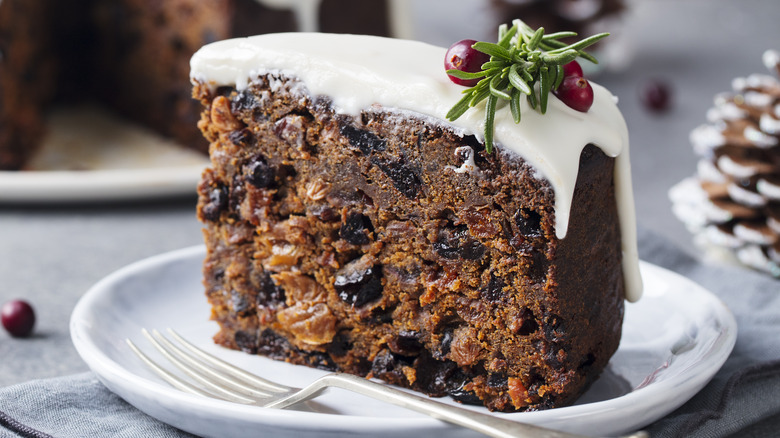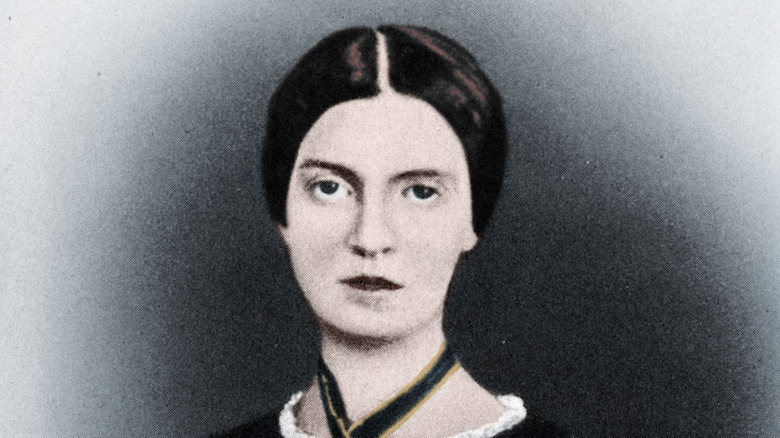Emily Dickinson's Famous Black Cake
Emily Dickinson is revered for the nearly 1,800 poems discovered and published after her death in 1886, making her one of the many artists celebrated more in death than in life (via Poets). Dickinson was born in Massachusetts in 1830, and Discovery reports that she was fiercely bright but, like most women at the time, was not expected to become a great poet but to tend to household affairs. However, Dickinson didn't seem to view the work as drudgery, as she would often wish her friends well by sending them candies and baked goods, according to the Emily Dickinson Museum.
When we think of Dickinson, we imagine her penning poems like "I felt a Funeral, in my Brain" or "'Hope' is the thing with feathers," not whipping up holiday recipes. But Dickinson was a woman of many talents, and the foods and recipes she sent to loved ones are still used today, especially her recipe for black cake.
Black cake gives English fruitcake a run for its money
Dickinson's black cake tastes fruity, moist, and subtly boozy. The Washington Post says that the fruit filling consists of several pounds of raisins, dried currants, dried apricots, dried prunes, dried pears, pitted dates, and brandy. This mix is then folded into a batter using 13 eggs flavored with cinnamon, cloves, ground mace, fresh nutmeg, cardamom, ginger, vanilla, and the ingredient which gives this cake its dark coloring: molasses. A rich brandy syrup is then applied before serving. The cake was intended to be baked during the holiday season, much like a British fruitcake, though Dickinson's creation weighed an astounding 20 pounds and needed to be soaked in a liquor syrup for at least a month before eating. Harvard obtained Dickinson's recipe because the author sent it to a close confidant, Nellie Sweetser, in 1883.
According to Atlas Obscura, all of the spices and sweeteners like sugar and molasses that Dickinson used to make her black cake (aka Caribbean Christmas cake) were sourced from plantations in the Caribbean because these ingredients weren't grown so far north. The cake's focal point is the burnt molasses, which gives it the sweet, brandy-flavored cake a characteristic bitterness. Similar recipes were popular in Caribbean households before they became a part of Dickinson's culinary repertoire.

